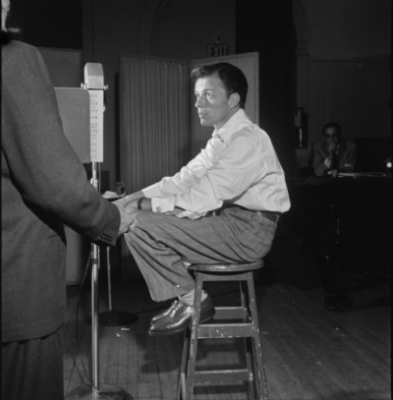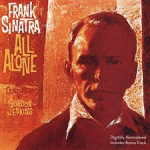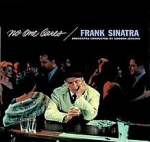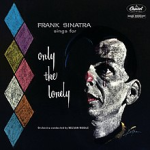.
.
photo by William Gottlieb/Library of Congress

Frank Sinatra, Liederkrantz Hall, New York, N.Y., ca. 1947
.
___
.
Sinatra and Me
by Paul Brophy
.
…..Frank Sinatra floated through the air in my boyhood home and Philadelphia neighborhood. My mother and two of her older sisters, Henrietta and Marge, had seen young Frankie in person at Atlantic City’s Steel Pier in the late 1930s, the thrill that wed these young Italian-Americans to Frank for life. “It’s Always You” reached them. He was part of our Staffieri family — their fantasy husband.
…..When I was growing up Frank could be spotted and heard around the neighborhood. The framed Holy Trinity hung in Larry Cosetti’s living room: John F. Kennedy, Pope Pius XII, and Francis Albert Sinatra, with the Pope in the center, just a bit higher than the other two. (Kennedy and Sinatra were saints, yet they didn’t represent Christ on earth). The Seeburg jukebox in Aunt Marge’s luncheonette was half full of Sinatra 45s, including his novelty songs like “River Stay Away from My Door”, and “Ol’ MacDonald.” And he was in the jukebox at Lou’s pizza shop, where we sat around Formica tables after the Friday night 8th grade dances, a musical shift from the more juvenile songs we had rocked to earlier in the evening — songs like “Lloyd Price’s “Personality” and Dion and the Belmonts’ “A Teenager in Love,’ the teen version of the bumpy road of love. “Why must I be a teenager in love?”1
…..Mom hummed and sang Sinatra while vacuuming and washing clothes in the wringer washer and then hanging them in the backyard to dry. She stirred her special spaghetti sauce with him in the kitchen. He taught her that days go too slowly “Without a Song.” “I only know, there ain’t no love at all, without a song.”2
…..When I was eight and my brother Richie was four, we memorized and perfected “Love and Marriage,” earning broad smiles from Uncle Jim and Aunt Betty and just about everyone else who wandered into our row house. We sang, “Dad was told by Mother, you can’t have one, you can’t have none, you can’t have one without the other,”3 without understanding, of course, that “none” was a double entendre.
…..As I inhaled the Sinatra air around me a voice deep inside urged: “The girls swoon over Sinatra, so be like Sinatra, and maybe the girls will swoon over you.”

Paul’s 1956 Chevy
…..Our connection deepened every Friday night in the 1960s as I listened to Friday with Frank on WHAT, a jazz and blues station, while delivering pizzas in my family’s 1956 Chevy from that same pizza shop with the Sinatra in the Wurlitzer jukebox. Friday nights meant handling 40 or 50 orders, as Sid Mark, a DJ who knew Frank personally and seemed to know everything about him, spun popular and obscure Sinatra. It was three hours of pizza and Sinatra, mixed with inside stories and handcrafted commercials for Italian grocery stores and restaurants in South Philly. Some of those songs, like “Come Fly with Me” and “High Hopes,” kept me running and hoping for broader horizons.
…..With Frank as my consort, I fell in love with Love delivering those pizzas.
…..Ah, the highs of falling in love. Like that night at St. Joes dance when the 17-year old me spotted a knockout from South Philly in a polka dot dress and, instead of going to my usual corner to get up the nerve to ask her to dance, I walked right up, asked her, and was in heaven. Barbara was tall, pretty, and magnetic. “In my frightened arms, polka dots and moonbeams sparkled on a pug-nosed dream.”4 Love was “All the Way”. It was “Witchcraft.”
…..And the lows. That stormy night I heard Frank sing Burke and Van Heusen’s “Here’s that Rainy Day” I had to pull over to the curb. It was just after Barbara turned me down a third time for a date, and I gave up asking. Or, Rogers’ and Hart’s “It Never Entered My Mind.” “You have what I lack myself; now I even have to scratch my back myself.” 5
.
.….(Interlude 1: I pause here to beg patience from the reader who is not in love with Sinatra, and who conjures up Frank as an old-school womanizer who shouldn’t even be spoken of today let alone listened to. His swinging version of “Ol’ MacDonald” captures the guy-gal culture of his times. “ . . . With a little curve here and a little curve there, this Chick she had curves everywhere.”6 He had four wives, one of whom was half his age. [My mother had trouble forgiving him for Mia Farrow, but she eventually got around to it.] Then there were his affairs and one-night stands, which while they didn’t trouble my aunts shocked me when I read about them in my mother’s Photoplay magazines. No argument with any of that. I just can’t Cancel Frank.)
.
…..He and I moped on the serene moonlit Avalon beach most nights in New Jersey the summer of 1966. We ceaselessly hummed and sang “Mood Indigo,” the melody and words echoing and feeding my dark and deep-as-the ocean loneliness. None of the girls I wanted, wanted me back. I was miserable; and, for better and worse, I was beginning to taste the sweet side of self-pity.
…..Being in love with Love meant Sinatra had to help me face this heartache.



…..Frank can reach the depths of loneliness. He may be the best ever at it. There are albums entirely of heartbreak songs—All Alone, (1962) No One Cares, (1959) Sings for Only the Lonely, (1958). They’ve been my cocktails through every breakup and love fight in my adult life: a melancholy Sinatra, a few whiskeys, and tears.
…..How to make a woman swoon? The plot thickens here because I received completely opposite messages in my youth. There was the Sinatra approach: “Something’s Gotta Give,”“All I Need is the Girl,” and his public behavior, countered by the persistent message from the nuns and priests who taught me in the Catholic schools that Frank wasn’t kidding when he sang “Love and Marriage.” You get any before you’re married and you suffer the eternal pain of hell. Swooning without canoodling? As impossible as walking the beach without sand between your toes.
…..I wasn’t handsome and debonair like Frank. I was a gawky. And I sure didn’t dress like Frank. Hell, I only learned that stripes and plaids didn’t go together when I was 17 and my crush Rosemary Logan asked me why I had both on my body at the same time.
…..“The shirt and the pants both have red and blue in them,” I offered, pointing out the matching colors.
…..“No, Paul, it doesn’t work that way”.
…..Ugh. Who taught Frank how to dress? Frank was an Italian kid from Hoboken. I was an Italian-Irish kid from Philadelphia. Why couldn’t I be like more like him?
…..A decade later I admired Woody Allen’s portrayal of this feeling of ineptness in Play it Again Sam, his nerdy character coached by an imaginary Humphrey Bogart on how to win a girl’s heart. “Tell her you’ve met lots of dames, but you are really something special.” It worked for Woody.
…..But not for me. Sinatra’s songs and Bogart’s style didn’t win for a pimply teen with stripes and solids.
.
…..(Interlude 2: You may be thinking: it’s bad enough he’s focused on Sinatra. Now this guy is citing Woody Allen, who is in deeper shit than Frank for his reputed sexual behavior. I hear you and I support the #MeToo culture; but I try to be forgiving of, or avoid focusing on, personal foibles, and sins. The artistry is what’s essential to me. Stay just a bit longer, please, I’m almost done.)
.
…..I bumbled through those years, finally finding love, losing it, and finding it again. I’m now 35-plus years into my second marriage.
…..Sinatra’s indispensable album for me in my senior years is September of My Years, filled with mellow reflective songs, looking back with some regrets, some fond memories, and some elder wisdom. “How Old Am I?,” “The Man in the Looking Glass,” and “This is All I Ask.” “How old am I? Old enough to know the difference between infatuation and the love that has a chance to grow.” 7
…..The British music critic Ian Penman says that in his last concerts, Sinatra “ . . . was speaking to everyone in the audience who’d grown up with that voice and grown old with that face, and forgiven their owner’s many trespasses. He’d been their fall guy and idol, political bellwether and stand-in Las Vegas libertine. They’d played his records on first dates and then later at wakes for army buddies and others gone too soon. No one else’s voice seemed to play just so on so many different occasions.”
…..The song that plays through my entire life–my top song of the thousand or so that he recorded–is “Young At Heart,” conveying the Sinatra wisdom that seeped into me in my boyhood, and was my mother’s favorite.
…..I led my friends in singing it at my 70th birthday party:
Fairy tales can come true
it can happen to you if you’re young at heart
for it’s hard, you will find
to be narrow of mind if you’re young at heart.8
…..(Oh, you’re still with me? Go ahead and listen to it. You just might enjoy the message.)
Thanks for the Memories, Frank.
.
.
___
.
.

Paul Brophy’s love for Sinatra songs is the base for his lifelong affection for the composers and lyricists of the Great American Songbook as interpreted by the jazz singers and musicians of his generation. His playlists, including “Sinatra and Me,” can be found on Spotify by clicking here.
He still eats pizza and listens to Frank on Friday nights.
.
.
.
Listen to Frank Sinatra’s 1981 recording of Ralph Rainger and Leo Robin’s “Thanks For the Memory”
.
.
1 Music and lyrics by Doc Pomus and Mort Shuman
2 Music and lyrics by Vincent Youmans, Billy Rose and Edward Eliscu
3 Music and lyrics by Sammy Cahn and Jimmy Van Heusen
4 Music and lyrics by Jimmy Van Heusen and Johnny Burke
5 Music and lyrics by Richard Rodgers and Lorenz Hart
6 Lyrics by Marilyn Bergman, Spence Lewis (Lew), and Alan Bergman
7 Music and lyrics by Gordon Jenkins
8 Music and lyrics by Johnny Richards and Carolyn Leigh
.
.
.
































